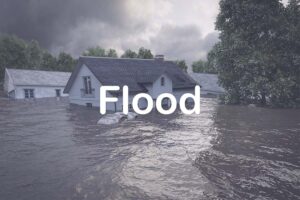 As forecasters warn of a dangerous winter storm threatening the Midwest, South, and Northeast, business and property owners must implement a Winter Hazard Program to help reduce injury, damage, and roof collapse.
As forecasters warn of a dangerous winter storm threatening the Midwest, South, and Northeast, business and property owners must implement a Winter Hazard Program to help reduce injury, damage, and roof collapse.
Winter storms have already shown that snow accumulation can wreak havoc on businesses and their properties. Business owners can take practical actions to help minimize their exposure to the threats of winter weather by implementing a Winter Hazard Control program.
The guidelines below can help businesses prepare for tomorrow’s storm:
Ground Snow Removal
- Verify that snow removal personnel are not pushing snow against roof drain outlets. Snow should be cleared from around the outlets so water can easily escape.
- Verify that your fire protection equipment, hydrants, control valves, and fire pump room remain accessible. Snow should be removed from around this equipment, which may require some hand shoveling.
- All doorways should be accessible and snow removed to allow egress. This is especially important for emergency exits.
Roof Snow Removal
· Roof drains should be inspected to ensure they are clear of snow and ice. An area around each drain should be cleared to allow water to reach the drain. Remember, your roof covering can be easily damaged, so plastic shovels should be utilized. The use of calcium chloride is an effective way of keeping ice from accumulating in your drains.
· In the event, you need to remove snow from the roof, and we recommend that you solicit the services of a qualified roofing contractor and ensure that all OSHA guidelines are strictly followed.
High Winds
· Check the roof for loose flashing. If the flashing is loose, it should be secured with #8 (minimum) corrosion-resistant screws long enough to engage the wood nailer adequately. The screw should have a large pan head, or a washer should be used.
· Check for loose rooftop equipment. Rooftop equipment may include satellite dishes, electrical conduits, lightning protection, and piping systems. Secure or remove any loose equipment that may be dislodged in high winds.
· Remove any debris from the roof
· Remove any ground-level trash, debris, seasonal equipment, or other items that can become projectiles in high winds.
· Continue to monitor the exterior of the building to ensure no glass gets broken. Broken glass can lead to localized freezing of water-based systems. Any damage to the building envelope should be temporarily sealed until more permanent repairs can be made.
Power Outage
- Make sure emergency power equipment is operational and that fuel tanks are full.
- Any small portable generators you rely on should be tested, and fuel tanks should be complete. These should only be used in a safe, well-ventilated area.
- Building temperatures should be monitored if your building heat is lost due to a power failure. If temperatures fall below 40 degrees Fahrenheit, safeguards should be taken to protect water-based systems against freezing.
This bulletin is intended only as a reminder and is offered solely as a guide to assist management in its responsibility of providing a safer working environment. This bulletin is not intended to cover all possible hazardous conditions or unsafe acts that may exist. Other unsafe acts or hazardous conditions should also be noted and corrective action taken.
